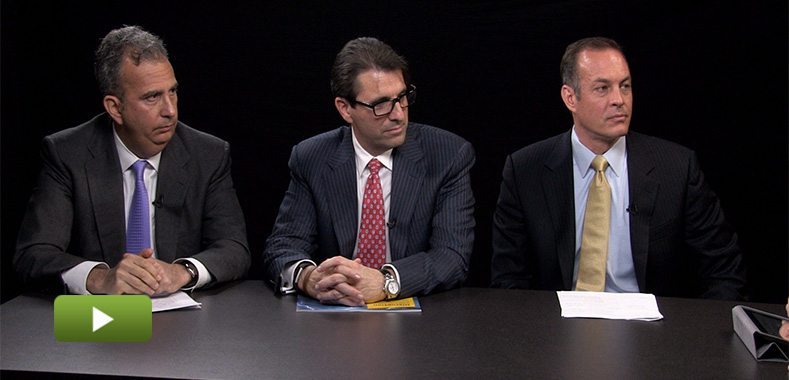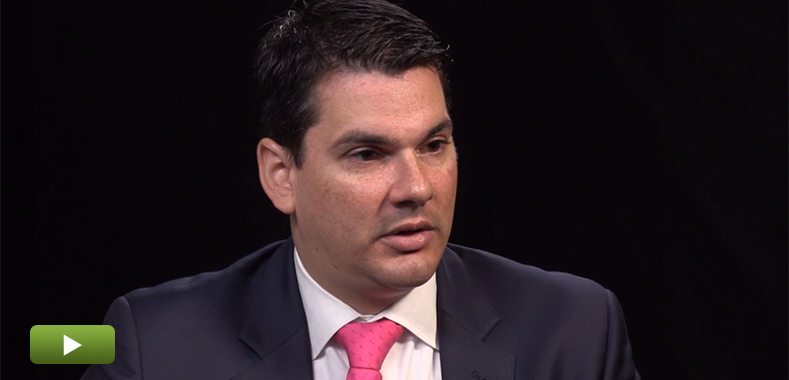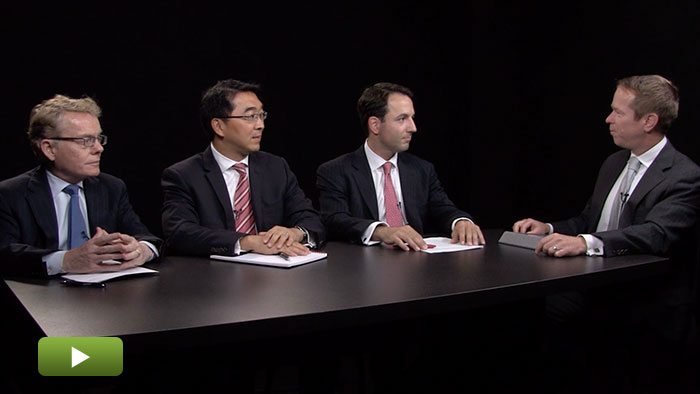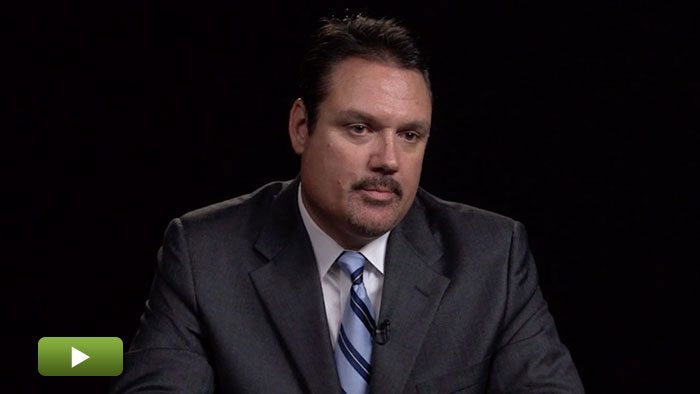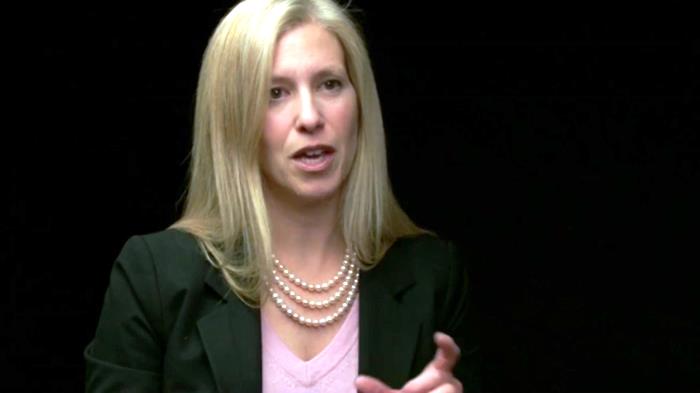Why Sharing Portfolio Data Is so Difficult
Partners from Siguler Guff & Co., AlpInvest Partners and Clayton, Dubilier & Rice discuss the resources necessary to make private equity “big data” useful, including sharing valuable portfolio company information with limited partners. They also detail the challenges of sharing voluminous amounts of information and the limits of measuring ESG impact for investors.
Transcript Download Transcript
Why Is Sharing Portfolio Data So Difficult?
Data and Excellence in PE Investing
David Snow, Privcap: Today, we’re joined by Thomas Franco of Clayton, Dubilier and Rice; Jay Koh of Siguler Guff; and Eduard Lemle of AlpInvest Partners.
Snow: We’re talking about the importance of data in private equity—not simply data but the way you receive it, analyze it and make yourself a better investor. All of you are heavily involved in that process, so I’m fascinated to hear what you have to say. Let’s talk about the pain that has been experienced historically in private equity in sharing portfolio company data—getting it from the portfolio companies through the GP, in many cases, through the fund of funds and to the LP. Then, how is that improving and can be made better? Tom, you are in charge of investor relations at Clayton, Dubilier and Rice. How painful historically has it been to regularly gather data and share it with your LPs, and to respond to their many ad-hoc requests for information?
Tom Franco, Clayton, Dubilier & Rice: I might not use the word “pain.” I would say it’s a challenge and that we’re evolving our capabilities to be more efficient. There have been some comments about expenses in the GP and communicating and being transparent about that. One area where there has been more investment in terms of managing the GP is in the area of fulfilling these kinds of disclosure requests. You have to have people who are able to find the data within the system, and then put it into a format particular to the LP that’s requesting that information, so that takes time. The long-term efficiency will come from more standardization and from platforms that are providing services, at least technology-related platforms, to deliver this in a much more effective way.
Snow: Jay, as an investment advisor, you are requesting information both from your own GPs and from their portfolio companies, and you are responding to requests from your own investors. Talk about the resources and people necessary to make that happen.
Jay Koh, Siguler Guff & Co.: In the small-buyouts universe, we’ve got close to $2 billion invested across more than 50 different managers and 30% of that capital invested in co-investment transactions, direct transactions. The data interface there is managed by that team that manages that set of portfolio relationships and direct investments. And we’ve found that’s the best way to do it, because the data is completely integrated into the decision-making process. How we extract performance information from that and then report it is much less duplicative than it might be if you had a completely separate reporting function that would provide it. That’s on how we get information. We do the same kind of thing when we talk about our emerging markets activity, our distressed investing, our distressed real estate investing activity so that we can say things like, “Across our distressed real estate portfolio, on average, we’re investing at less than 38% of replacement cost,” for example, and know how much square footage we have and extract that information. What we have had to do, though, is add more resourcing at the individual investment team level to make sure we continue to maintain these increasingly large and complicated databases, and to standardize where we’re actually getting that reporting. We do get some customized data requests that come in and we also provide very specialized and tailored information, particularly in separately-managed accounts. So, when we’re trying to customize to a portfolio and provide very specific reporting, that creates additional resources that we marry between our investor relations team and our deal team activity.
Snow: Eduard, AlpInvest is one of the largest investors in the private equity asset class. You both request a lot of information and, no doubt, get requests for lots of information. Talk about the team and the resources you’ve built to process all of that. Has it grown over the years?
Eduard Lemle, AlpInvest Partners: We’ve certainly invested or are continuously investing in systems and technology, in addition to processes, human resources and growing teams. The result is that much of this is fairly automated from the gathering to the processing and displaying the data. But there is always room for continuous improvement. In terms of gathering, we use a multitude of sources including outsourced providers that are specialized in it directly from GPs.
Snow: How does it work? Do you usually send an Excel spreadsheet template to a GP and say, “Please fill out these forms,” and then they have to respond within a certain amount of time?
Lemle: The deal team sends out a very tailored request. Here, it’s important to not inundate the GP with a laundry list of 500 items, but to have an initial analysis of that fund opportunity and then ask for those items that are value-added for analysis. Certain things, like entry multiples, have been standard for many years in the industry and many of those will continue to be requested. ESG is definitely something qualitative that’s new and several other items, but this is a very different topic from the ongoing data requests.
I would say there are three remaining challenges that cannot be covered by automation and I would just like to highlight them. One is reviewing and checking the data, which cannot come by a computer and revised investment professionals. The second would be disclosure. We quickly realized that you really need to monitor what exactly can disclose on a very granular level. Looking at side letters or LPAs and here, obviously, the hope on the LP’s side would be that there is increasing standardization and willingness from the GP’s side to be more and more forthcoming with what can be shared then by LPs to their investment sources.
The last point is really making sure that we add value in how we design the reporting to our investors and show relevant analysis rather than just—
Snow: Here is 10 thousand facts, have fun.
Lemle: —a table with 10 thousand rows and 200 columns.
Snow: That leads to a question I have for all of you. We know that LPs want much more information. They want to be able to analyze that information and yet many of them don’t have the resources of AlpInvest, Siguler Guff, or Clayton, Dubilier and Rice. Is there a risk or a reality that many of these LPs are getting reams of information—even information that can be sliced and diced—but they don’t have the team in place to do anything useful with it? And is that a big challenge for that community of investors?
Koh: If you look at the structuring and resourcing and governance of different long-term pools of capital, whether they’re endowments and foundations, high net-worth individuals or corporate plans, large, middle and small-size US states, international super annulation and pension funds or sovereign wealth funds—they all have different fundamental human resources available. They have different decision-making processes, they have different data available to them, and they have different restrictions on how they can operate. The best GPs we work with and some of the role we play for our separately managed accounts in particular is this customized interpretation of what’s happening and the context in which it’s happening in these different markets. So, the easy example is something like the emerging markets where you’ve had election cycles in South Africa, Indonesia, India, and Brazil is upcoming. So, how do you think about the performance of your portfolio and the currency effects of it in the fact of these potentially major political changes?
How can iLEVEL’s platform help the private equity asset class grow?
Hank Boggio, iLEVEL Solutions:
At iLEVEL, we believe that by providing a limited partner or an institutional investor with deeper access to data, they’ll have the ability to have more confidence in their data and to effectively be able to monitor and measure the performance of their portfolio, ultimately increasing the asset class allocation and getting better returns in total.
Talk about iLEVEL’s origins within the Blackstone Group.
Boggio: Today, over 100 GPs use our technology. What Blackstone realized several years ago was that inefficiency of having access to data that was spread across the organization, prone to errors, difficulty in trying to aggregate that—these are very time–consuming processes. They have expensive resources on the investment teams that were spending upwards of 80% of their time chasing data as opposed to doing what they’re paid to do, which is essentially analyze that information, assess performance and ultimately source new deals. So, having it centrally stored gave them the ability to then effectively and efficiently use that data for a variety of reporting purposes.
Yeah. If you look at allocations today from an LP’s perspective, they’re putting a small percentage, 6%, 7%, 8% or 10% perhaps into their overall portfolio. The reason that’s so limited is because they don’t or they haven’t had the ability to effectively look at that data to assess risk and exposure. Where do they have an issue in a portfolio? Do they have a particular allocation that perhaps needs to be hedged against the public markets? While the asset class has always outperformed the public markets, or at least in most cases has outperformed the public market asset class, they haven’t had the confidence in the data they have, or perhaps the lack of access to that data is the reason they’ve not been able to increase the allocation to the asset class.




